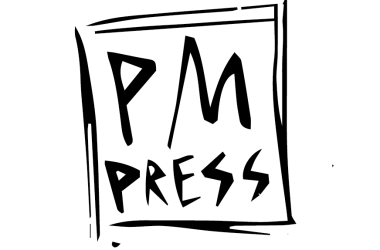By Jim Feast
North of Oxford
A review of Brooklyn Crime Novel by Jonathan Lethem
Lethem certainly raises big issues in his new Brooklyn Crime Novel; however, it’s not the fact that he raises them, for, after all, anyone can raise issues, but how he addresses them that makes the book a startling and fundamental examination of race, neighborhood formation and adolescence. In fact, his book calls to mind not only other novels but significant works of sociology, particularly those of Goffman and Bourdieu.
The book tells the story of a cohort of young men and women, known not by names but by descriptors, such as the screamer or older brother, or by nicknames or even single letters, adolescents who are growing up in 1970s Boerum Hill, Brooklyn. This neighborhood itself, if not growing up, is undergoing transformative changes as profound as those affecting the young people, as it moves from one demographic to another. What had been a downscale, largely black and Hispanic community, slowly, as “homesteading” white families move in, changes into a middle-class area. Note, this is not the familiar story of gentrification, for this was the one of the first example of such changes and, unlike later-day cases, which are often fueled by those looking to buy property that will later appreciate in price, this movement came as the result of progressive parents, often with backgrounds in the Civil Rights movement, who wanted to integrate (not take over) this minority neighborhood.
In the story, which accurately reflects the history of Boerum Hill (where I also lived at the time), it is the school-age kids of the homesteaders that become the pressure point. The parents seem to live in an imaginary world of their own devising in that they think their placement as whites in the poor neighborhood itself will solve all problems. As Lethem puts it, “Parental idealism casts the white boys into a dreamworld. What incredible luck [the parents seem to be telling their sons] that just a minute before you came along, we solved all these conundrums [of race] thanks to civil rights, reefer and jazz appreciation, now go out on the streets and play.”
As hoped for by their white parents, they do make black friends, but they also have fraught relations with their black schoolmates who live in the nearby low-income projects. Brooklyn Crime Novel unravels the many twisting engagements and stresses between the black and white kids, and with their parents; but the tale’s center of focus –and this points to the book’s daring originality – is not on characters or dramatic events and plot twists, though there are plenty of those, but on a social practice, the “dance.” This is a street encounter that happens on a daily, or, at least, school-day daily, basis when a white kid or two is accosted and “shaken down” for lunch money by a black kid or two. This action, shown in multiple incarnations throughout the book, is not a pure improvisation but a ritual, something that, emotionally charged as it is with humiliation for the prey and anxiety for the perpetrators, has strict rules and limits. “The dance is a dance because no one can tell you in words. The dance is a dance because you have to do it to learn how to do it. The dance is a dance because it is an elastic ritual, one with blank spaces, intervals, for improvisation. You can certainly get it wrong.”
This highlighting of a practice, which can occasionally take unexpected and even dangerous turns, makes me think of Goffman’s Frame Analysis in which the sociologist analyzes “talk,” the type that might occur in a bar or at a cocktail party, paying careful attention to how these casual exchanges are carefully set up within a mutually accepted, unspoken frame, that is, an acknowledged set of roles and interaction rules. However, truth is, Lethem looks deeper than this, drawing his writing closer to the perspective of Bourdieu. In his anthropological works, the French thinker invents the concept “habitus” to refer to a person’s attitudes and intellectual postures, and, as importantly, the postures of the body: the way the person walks, moves, acts physically in encounters and so on. In books such as Outline of a Theory of Practice, he develops this concept in studying the Berbers in Algeria, arguing that the habitus is inseparable from the lineaments of a developing, conflictual society whose fissures and conflicts, in this case, particularly between men’s and women’s organizations, mark and inflect the habitus. Certainly, this is a complex point to make, and Lethem makes a similar one in repeatedly drawing attention to how the shakedown (and other typical practices, such as the way some white youth imitate the talk and walk of the blacks) is carefully positioned in the specific history of the community.
Still, lest I give the wrong impression, sociological as this may seem, the novel puts all this complexity in the margins – very thick margins – while carrying forward a lively story. Each character, while indelibly marked by the constraining circumstances, is nonetheless attractively idiosyncratic; and so are the encounters. Even the shakedowns are all quirky and often humorous. A further plane is added to the book by the fact that, while focused on these formative ‘70s years, at points the book jumps ahead to reveal how the involved look back in anger or with nostalgia or a remaining incomprehension in ways that add a satisfying and often surprising dimension to the narrative. The remembering is often rendered with careful phenomenological accuracy as when the author mentions a special kind of reminiscence.
Say a guy walks down a block he’d walked down for fifty years and all he feels are what he calls locked-out memories. Locked-out memories are the thing where you stand at the door or the gate or the stoop of a building that once was yours – I don’t mean that you owned it … only that you were once permitted entry and are no more… — and you can no longer enter. Can only glance at the windows.
And the memory is inside.
And you are locked out.
.
To put the broader point about the book in another way, Brooklyn Crime Novel, amusing and tragic by turns, bears the weight of thick historical and sociological detail lightly, almost casually, but it is a heavy weight, that burden being something of a measure of the novel’s special magnificence.
You can find the book here: https://www.amazon.com/Brooklyn-Crime-Novel-Jonathan-Lethem/dp/0062938827
Jim Feast’s most recent publication is Karl Marx, Private Eye (PM Press).




